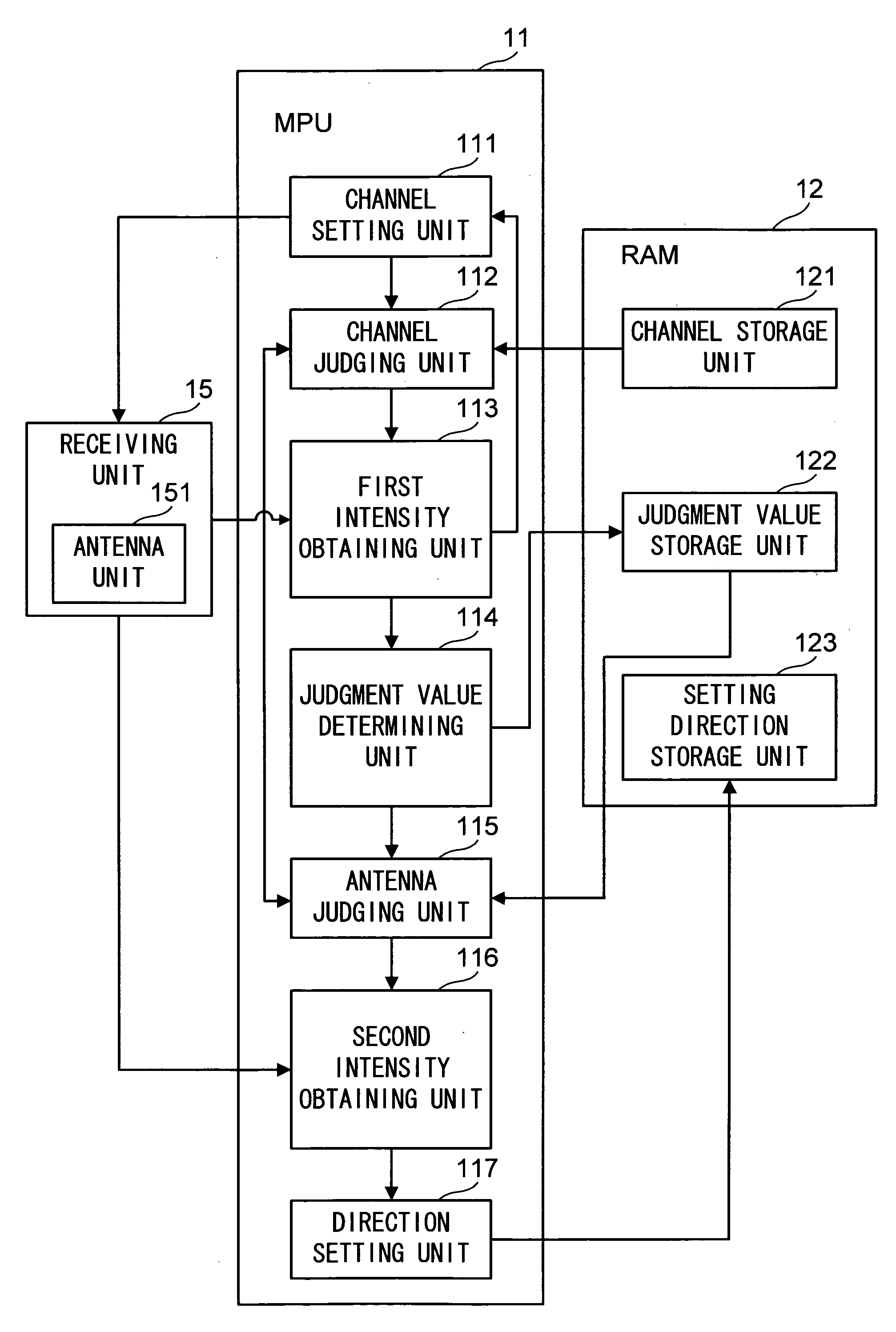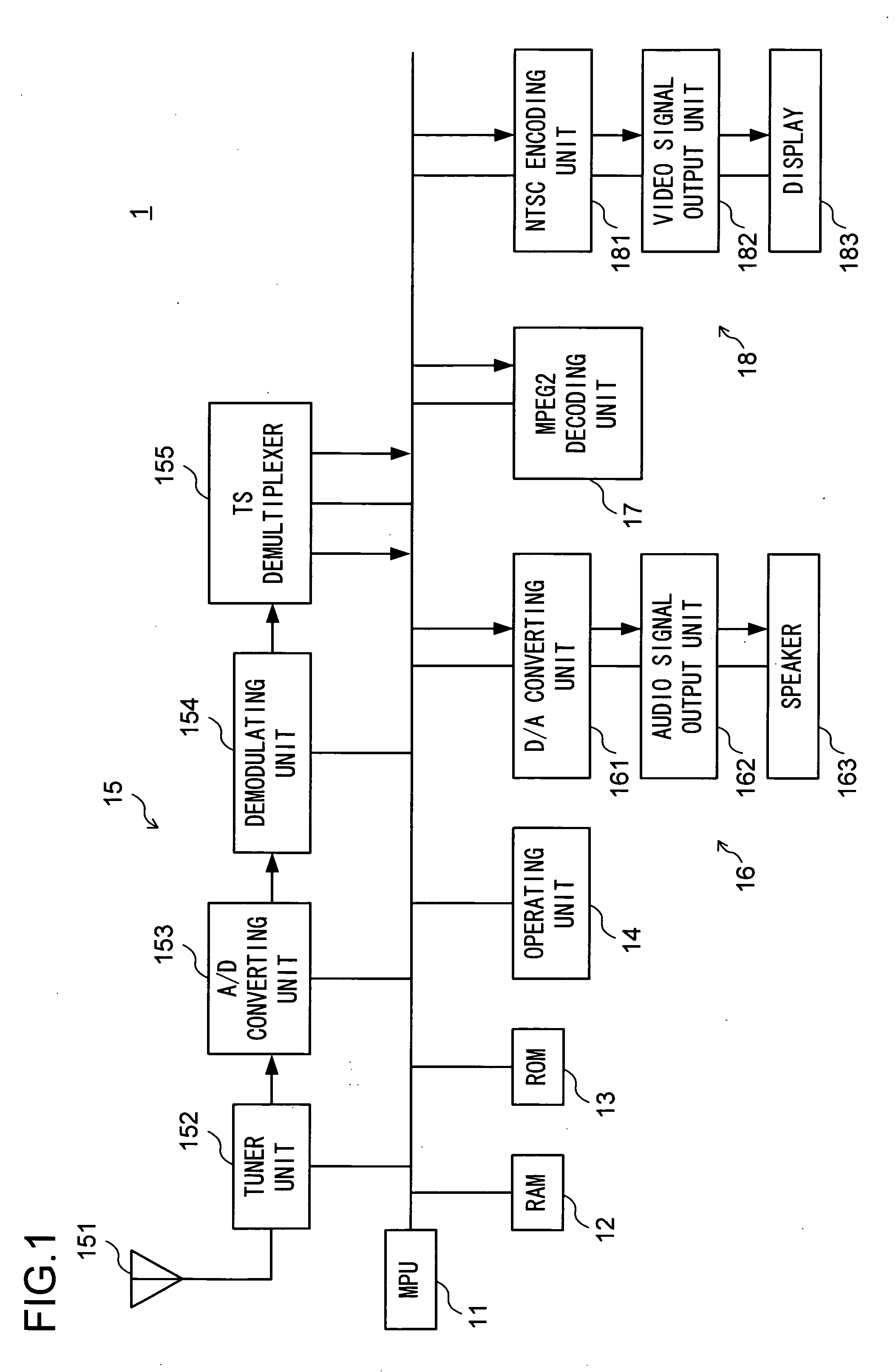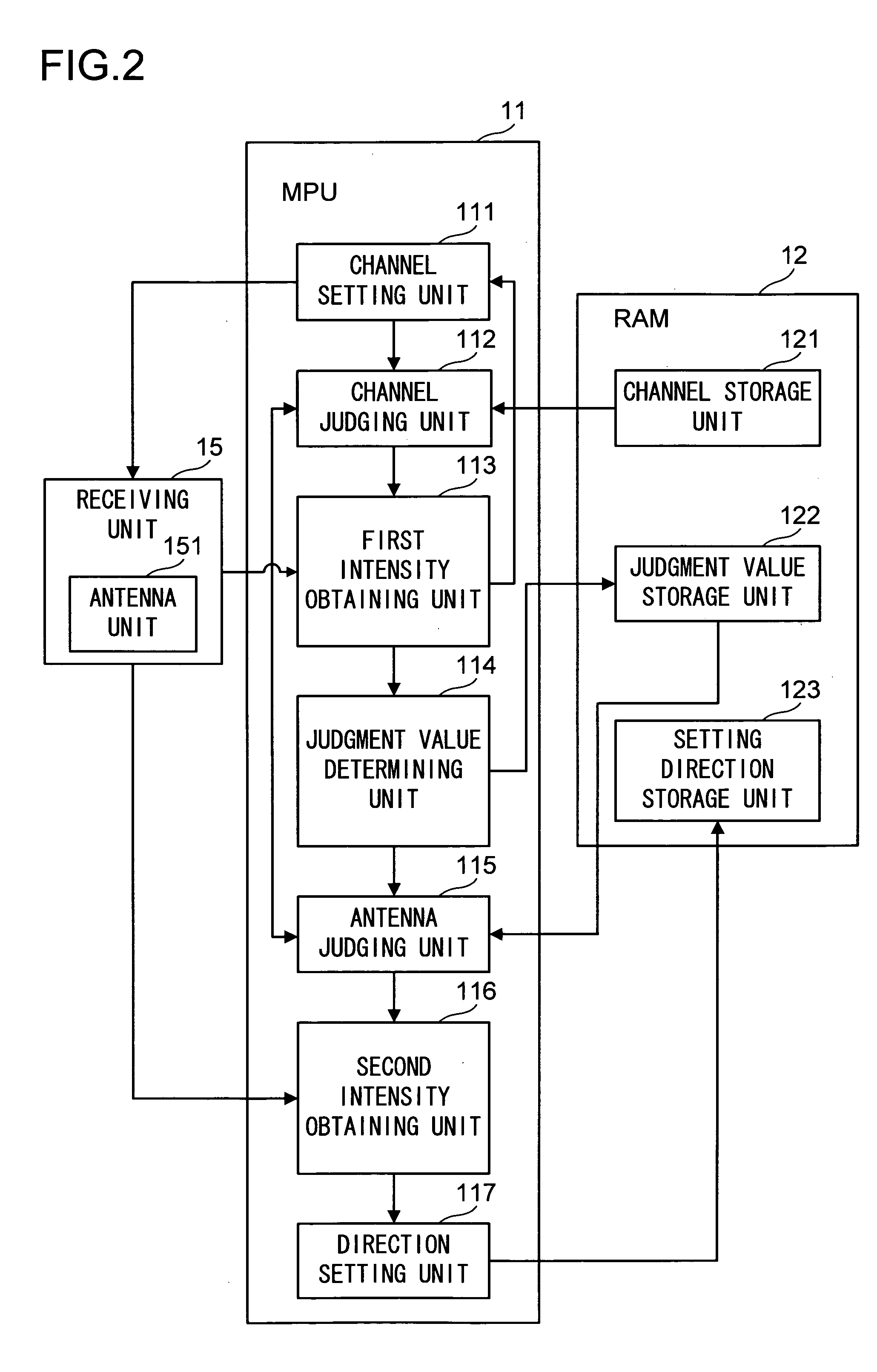Broadcasting receiving apparatus
- Summary
- Abstract
- Description
- Claims
- Application Information
AI Technical Summary
Benefits of technology
Problems solved by technology
Method used
Image
Examples
Embodiment Construction
[0030]Hereinafter, an embodiment of the present invention will be described with reference to the attached drawings. FIG. 1 is a block diagram to show an example of the structure of a digital broadcasting receiving apparatus in accordance with the present invention. A digital broadcasting receiver 1 (corresponding to the broadcasting receiving apparatus) receives a television broadcast signal and delivers its content to a speaker 163 and a display 183 that will be described later. The digital broadcasting receiver 1 includes a micro processing unit (MPU) 11, random access memory (RAM) 12, read only memory (ROM) 13, an operating unit 14, a receiving unit 15, an sound output unit 16, an MPEG2 decoding unit 17, and an image output unit 18.
[0031]The MPU 11 controls the entire operation of the digital broadcasting receiver 1. The RAM 12 is a memory for storing information such as audio information, picture information and the like in a readable and rewritable manner. The ROM 13 is a memo...
PUM
 Login to View More
Login to View More Abstract
Description
Claims
Application Information
 Login to View More
Login to View More - R&D
- Intellectual Property
- Life Sciences
- Materials
- Tech Scout
- Unparalleled Data Quality
- Higher Quality Content
- 60% Fewer Hallucinations
Browse by: Latest US Patents, China's latest patents, Technical Efficacy Thesaurus, Application Domain, Technology Topic, Popular Technical Reports.
© 2025 PatSnap. All rights reserved.Legal|Privacy policy|Modern Slavery Act Transparency Statement|Sitemap|About US| Contact US: help@patsnap.com



